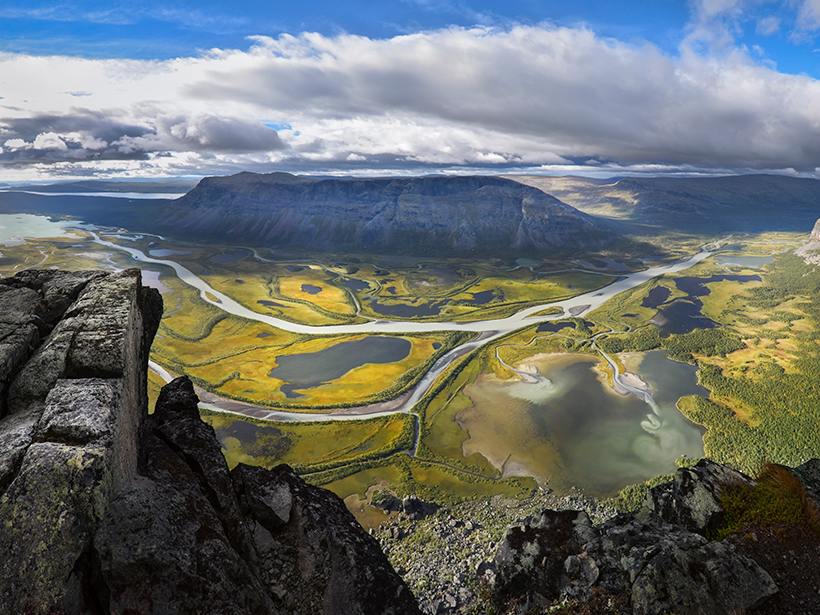For water managers, accurately knowing how much water flows in a river is essential for various societal applications ranging from flood defense to water supply allocation. A river’s discharge, however, is rarely measured directly. Instead, relationships known as rating curves are used to calculate discharge time series from continuous observations of water depth. The rating curve is typically inferred from many concurrent measurements of discharge and water depth in the river (gaugings) taken over long periods of time.
But what if we could rapidly and reliably establish rating curves by leveraging hydraulic models based on only a few gaugings?
Unfortunately, any uncertainties in the rating curve’s derivation translate directly into uncertainty about water resources. But what if we could rapidly and reliably establish rating curves with well-defined uncertainty estimates by leveraging hydraulic models based on only a few gaugings?
Scientists considered this question at a recent workshop funded by the Swedish Research Council Formas. The workshop was attended by 20 discharge monitoring and water resources management practitioners, bringing together representatives from the Swedish Meteorological and Hydrological Institute, Swedish Agency for Marine and Water Management, The Nature Conservancy, Stockholm University, Swedish University of Agricultural Sciences, Swedish Environmental Research Institute, and Uppsala University. As such, the workshop gathered experts from government, nonprofit, and academic institutes who face data and discharge uncertainty challenges on a daily basis.
Participants discussed results from recently developed methods for obtaining lower discharge monitoring uncertainty for given rivers. This included low-cost gauging strategies that target the most commonly occurring discharges.
Here the low cost comes about as hydraulic modeling and other statistical methods create an “uncertainty framework” that allows users to constrain uncertainty with only a few discharge observations (e.g., three to four gaugings) compared to traditional methods that need numerous gaugings. We also discussed incorporation of prior knowledge about river channel characteristics in addition to information from the few gaugings. Such an approach allows users to define uncertainty ranges similar to those of traditional methods while using fewer discharge observations.
The group highlighted the utility of using hydraulic modeling within uncertainty frameworks for monitoring responsive and remote locations in stream networks. They also highlighted the potential of using drones to find new monitoring locations and map topography that models may need.
Given the observations needed to combine hydraulic modeling and uncertainty frameworks, the workshop considered that there is good opportunity to engage students within modeling and ground-truthing projects. This inclusion creates connections between practitioners and educators.
Attendees concluded there is great potential for establishing rating curves rapidly for ungauged locations.
To assess the full potential of such a shift in modeling, especially in issues related to environmental restoration efforts, workshop attendees recommend research and development over a wide range of stream types with different characteristics. A range is necessary since most institutes and practitioners work across diverse geographies. The attendees also note that this recommendation allows for strong connections between research and practice around the assessment of discharge uncertainty. Such strong connections allow for implementation of relevant and realistic strategies for uncertainty characterization, thereby meeting the needs of those that actually work with streams and water resources.
Attendees concluded there is great potential for establishing rating curves rapidly for ungauged locations using hydraulic modeling within an uncertainty framework. This could improve discharge data for water management and environmental restoration in a cost-effective manner.
—Steve W. Lyon ([email protected]), The Nature Conservancy, Delmont, N.J.; Valentin Mansanarez, Department of Physical Geography, Stockholm University, Sweden; and Ida K. Westerberg, IVL Swedish Environmental Research Institute, Stockholm
Citation:
Lyon, S. W.,Mansanarez, V., and Westerberg, I. K. (2019), Can we predict river flows from just a few observations?, Eos, 100, https://doi.org/10.1029/2019EO116351. Published on 15 February 2019.
Text © 2019. The authors. CC BY-NC-ND 3.0
Except where otherwise noted, images are subject to copyright. Any reuse without express permission from the copyright owner is prohibited.

